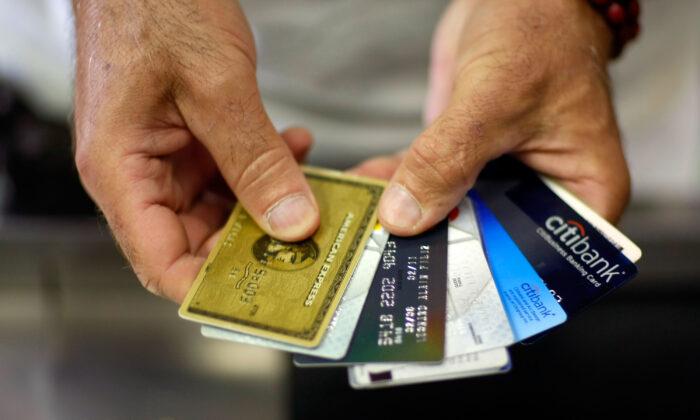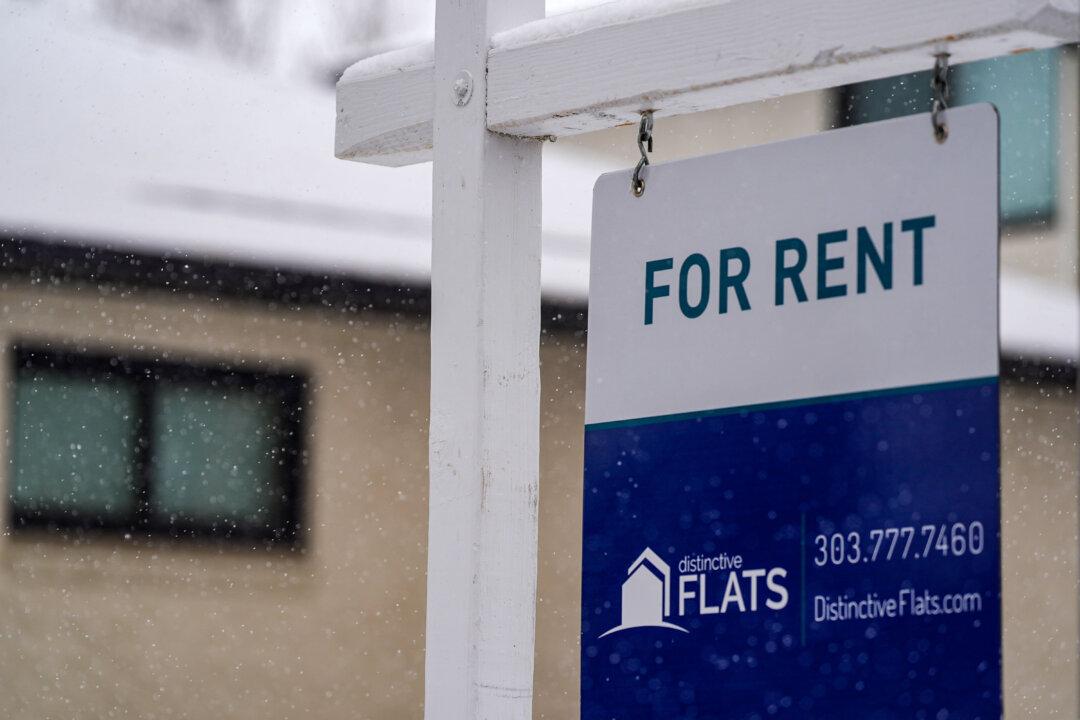A quarter of U.S. citizens would resort to using credit cards when faced with a $1,000 emergency expense, at a time of elevated credit card interest rates and decades-high inflation.
When asked how they would pay for a $1,000 emergency, 25 percent of respondents to a Feb. 23 survey by Bankrate replied that they would cover the expense with a credit card and pay it off over time. That’s up from 20 percent a year ago and marks the largest percentage of people who said they would use a credit card for that purpose since 2014.
Only 43 percent of respondents said they would fund the $1,000 emergency expense from savings.
Other survey options to meet emergency expenses included “reduce your spending on other things,” chosen by 12 percent of respondents. Eleven percent said they would borrow money from friends or family, and the remaining 4 percent claimed that they would take out a personal loan.
“On average, credit card interest rates are the highest we’ve seen and are slated to go higher as the Federal Reserve continues to hike. Under the best of circumstances, this debt should be paid before costly interest charges hit the account.”
Credit Card Debt Versus Emergency Savings
The 2023 Bankrate survey also found that 36 percent of respondents had more credit card debt than emergency savings, which is the highest percentage in 12 years. Last year’s number was 22 percent.Men had a higher amount set aside as emergency savings at 51 percent, compared to women at 48 percent. Men also had lower credit card debt at 32 percent compared to 40 percent for women.
Among millennials, 45 percent had more credit card debt than emergency savings, followed by Generation X with 44 percent, Generation Z with 38 percent, and baby boomers with 25 percent. Overall, only 51 percent had emergency funds or savings exceeding credit card debt. Thirteen percent had no savings or credit card debt.
“It is quite stunning that such a high percentage of adults has no savings and no credit card debt,” Hamrick said.
“Anyone with no such savings, including those without access to credit, risks tremendous stress, or worse, on their personal finances when hit with a significant unplanned expense such as a major home or auto repair.”
The survey was carried out in January with the participation of more than 1,000 American adults.
US Credit Card Debt
The total credit card balance of Americans grew by $61 billion to $986 billion in the fourth quarter of 2022, according to data from the Federal Reserve Bank of New York. That’s the highest total since 1999.Connecticut ranked at the top among states with the highest credit card debt per citizen, based on numbers from LendingTree. Residents of Connecticut had an average credit card debt of $9,408, followed by New York with $9,165, New Jersey with $9,044, Rhode Island with $8,728, and Texas with $8,701.
The average amount of credit card interest paid by households also increased, owing to rising revolving credit card debt and interest rate increases by the Federal Reserve.
“Credit card debt is often thought to be the result of frivolous spending, but for many Americans, that’s just not true,” said Sara Rathner, a NerdWallet credit cards expert.
“Consumers are feeling the squeeze of higher prices and interest rates, and paychecks just aren’t keeping up. That’s forcing many to make tough decisions, like going into debt to pay for necessities.”





